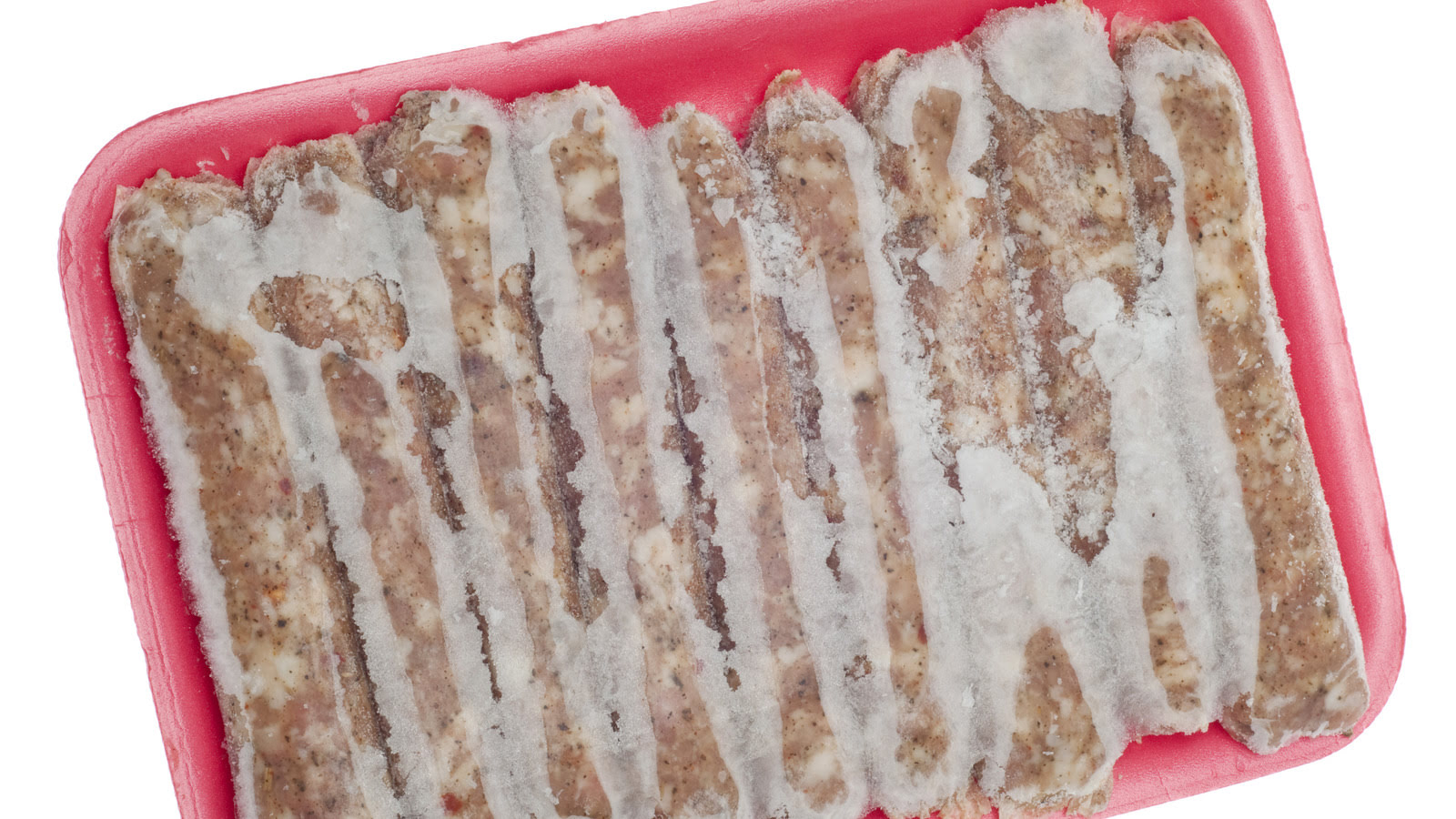

Articles
What Does Freezer Burn Do
Modified: October 20, 2024
Find out what freezer burn does to articles and how to prevent it. Learn how to protect your stored items from this common issue.
(Many of the links in this article redirect to a specific reviewed product. Your purchase of these products through affiliate links helps to generate commission for Storables.com, at no extra cost. Learn more)
Introduction
Freezer burn is a common occurrence that many people have experienced when storing food in the freezer for an extended period. It often leads to changes in the texture, appearance, and taste of the affected food items. Understanding what freezer burn is and how it occurs can help you prevent it and preserve the quality of your frozen foods.
When food is exposed to air and moisture in the freezer, it can result in freezer burn. This happens when water molecules in the food turn into ice crystals, which sublimate (convert from solid to gas) over time. The process of sublimation causes the food to dehydrate, leading to dry spots and a lack of moisture. As a result, the affected areas become discolored, develop a frosty appearance, and often have a cardboard-like or stale taste.
Freezer burn mainly affects the surface layers of food items, such as meat, poultry, fish, fruits, and vegetables. It is more likely to occur if the food is not properly wrapped or stored in airtight containers. Additionally, fluctuations in temperature within the freezer can exacerbate freezer burn. The good news is that freezer burn is not harmful to consume, but it does affect the quality and taste of the food.
Throughout this article, we will delve deeper into the causes and effects of freezer burn on food and provide valuable tips on how to prevent it. By understanding the science behind freezer burn and implementing proper storage techniques, you can keep your frozen foods in optimal condition and enjoy their quality for longer periods.
Key Takeaways:
- Proper storage techniques, such as using airtight containers, vacuum sealing, and maintaining optimal freezer temperatures, are crucial in preventing freezer burn and preserving the quality of frozen foods.
- Labeling, dating, and practicing FIFO (First In, First Out) rotation of frozen items are essential for minimizing the risk of freezer burn and ensuring the freshness and nutritional value of stored foods.
Read more: What Does Burning Your Grass Do
What is Freezer Burn?
Freezer burn refers to the process that occurs when food is improperly stored in the freezer, resulting in moisture loss and the development of dry, discolored patches on the surface of the food. It primarily affects frozen items that have been exposed to air and are not properly sealed or wrapped.
When food is frozen, it is typically placed in an environment with very low temperatures, which helps to preserve its quality and extend its shelf life. However, if the food is not adequately protected from air and moisture, freezer burn can occur. The process of freezer burn involves the sublimation of water molecules in the food, where they convert directly from a solid (ice) to a gas (water vapor) without passing through a liquid state.
As the water molecules in the food sublimate, they leave behind dry spots and cause the food to become dehydrated. The lack of moisture in these areas leads to changes in texture and appearance, such as dry, leathery patches and a frosty or powdery coating. The affected areas may also lose their natural color and develop a grayish or brownish hue.
It’s important to note that freezer burn does not necessarily make the food unsafe to eat. It primarily affects the quality and taste of the food rather than its safety. Consuming freezer-burned food may result in a taste that is cardboard-like or stale, as well as a less appealing texture. In some cases, it may be necessary to trim away the freezer-burned sections before cooking or consuming the remaining portion of the food.
It’s also worth mentioning that freezer burn can occur in both homemade and store-bought frozen foods. Even commercially packaged frozen items can develop freezer burn if they are not properly sealed or if there is damage to the packaging that allows air to come into contact with the food.
Now that we understand what freezer burn is, let’s take a closer look at how it occurs and what impact it can have on the quality of frozen foods.
How Does Freezer Burn Occur?
Freezer burn occurs when food is exposed to air and moisture in the freezer. It is a result of the sublimation process, where water molecules within the food convert from solid to gas without passing through a liquid state. This process causes the food to lose moisture and leads to the development of dry, discolored patches on its surface.
There are several factors that contribute to the occurrence of freezer burn:
- Poor packaging: Improper packaging is one of the main culprits behind freezer burn. When food is not sealed tightly or is not stored in an airtight container, it allows air and moisture to come into contact with the food. As a result, the water molecules in the food can sublimate more easily, causing freezer burn.
- Frequent temperature fluctuations: Fluctuations in temperature within the freezer can also increase the likelihood of freezer burn. If the temperature rises above freezing and then drops again, the ice crystals within the food can melt and refreeze, creating more opportunities for sublimation to occur.
- Freezer burn-prone foods: Certain types of foods are more susceptible to freezer burn. This includes items with high water content, such as fruits, vegetables, and lean cuts of meat. These foods have a higher moisture content, making them more prone to dehydration and freezer burn.
- Long storage periods: The longer food is stored in the freezer, the higher the chances of freezer burn occurring. Over time, even if the food is properly packaged, there is still the possibility of moisture loss due to the sublimation process.
It’s important to note that freezer burn can occur even in foods that are initially frozen at the correct temperature and properly packaged. However, taking steps to minimize exposure to air and moisture can greatly reduce the risk of freezer burn.
In the next section, we will explore the effects of freezer burn on food and why it is important to prevent its occurrence.
Effect of Freezer Burn on Food
Freezer burn not only affects the appearance of food but also its texture, taste, and nutritional value. Understanding the impact of freezer burn on food is crucial in order to preserve the quality and enjoyment of your frozen items.
Changes in Texture and Appearance: One of the visible effects of freezer burn is the development of dry, discolored patches on the surface of the food. These areas may appear frosty, leathery, or have a powdery texture. Additionally, the texture of the affected areas can become tough and unappetizing.
Loss of Nutritional Value: Freezer burn can also lead to a loss of essential nutrients in the food. The sublimation process that causes freezer burn dehydrates the food, resulting in the loss of water-soluble vitamins and minerals. This can lead to a decrease in the nutritional value of the affected food.
Potential Health Risks: While freezer burn itself does not pose any significant health risks, consuming freezer-burned food may result in a less enjoyable eating experience. The taste of freezer-burned food can be described as cardboard-like or stale, which may discourage consumption and contribute to food waste.
It’s worth noting that the extent of the impact of freezer burn on food can vary depending on factors such as the type of food, storage conditions, and the duration of storage. Some foods, such as bread and baked goods, may be more sensitive to freezer burn and can quickly develop an unpleasant taste and texture. On the other hand, foods with a higher fat content, like certain cuts of meat, may be more resistant to freezer burn due to the insulating effects of the fat.
To maintain the quality of your frozen foods and avoid the negative effects of freezer burn, it’s important to implement proper storage techniques. In the next section, we will explore some effective methods for preventing freezer burn.
Changes in Texture and Appearance
Freezer burn can significantly impact the texture and appearance of food. The development of dry, discolored patches on the surface of the food is a clear indication of freezer burn. Let’s take a closer look at the specific changes that freezer burn can cause.
Dryness: Freezer burn leads to the loss of moisture in the affected areas of the food. As a result, these areas become dry and leathery. The texture can become tough and unpleasant to eat. This change in texture can be particularly noticeable in items such as meats and poultry, which can lose their tenderness and succulence.
Discoloration: Freezer-burned food often undergoes changes in color. The affected areas may develop a grayish or brownish hue, contrasting with the natural color of the food. In some cases, the color change can be quite pronounced and make the food visually unappealing.
Frosty or Powdery Coating: Another characteristic change caused by freezer burn is the appearance of a frosty or powdery coating on the surface of the food. This is due to the sublimation process, where the ice crystals turn directly into water vapor. The frosty or powdery coating can be especially apparent on frozen fruits and vegetables.
Texture Alterations: In addition to dryness, certain food items may experience other texture alterations due to freezer burn. For example, frozen bread can become stale and lose its softness and freshness. Ice cream can develop ice crystals and become grainy instead of having a smooth and creamy texture.
It’s important to note that the extent of the texture and appearance changes may vary depending on the severity and duration of the freezer burn. Foods that have been severely freezer burned may have larger dry areas and more pronounced discoloration compared to mildly affected foods.
While the changes in texture and appearance caused by freezer burn are usually not aesthetically pleasing, it’s essential to remember that freezer-burned food is generally safe to eat. However, the altered texture and appearance may affect the overall enjoyment and quality of the food.
Now that we understand the effects of freezer burn on the texture and appearance of food, let’s explore the loss of nutritional value that can occur as a result.
Read more: How Do You Prevent Freezer Burn
Loss of Nutritional Value
Freezer burn not only affects the texture and appearance of food but also results in the potential loss of nutritional value. The process of freezer burn, which involves the sublimation of water molecules in the food, can lead to a decrease in essential nutrients.
Here are some key points regarding the loss of nutritional value due to freezer burn:
Water-Soluble Vitamins: Freezer burn can cause the loss of water-soluble vitamins, such as vitamin C and certain B vitamins. These vitamins are sensitive to heat and air exposure, and their levels can gradually decline over time, especially in foods that have been stored for extended periods.
Minerals: Similar to water-soluble vitamins, certain minerals, including potassium and magnesium, can also be affected by freezer burn. During the sublimation process, these minerals may leach out of the food, resulting in a decrease in their content.
Protein Denaturation: Freezer burn can also impact the protein content of food. Proteins, which are essential macronutrients, can undergo denaturation when exposed to air and moisture in the freezer. This can lead to changes in the structure and functionality of the proteins, potentially affecting their biological availability and digestibility.
It’s important to note that the actual degree of nutrient loss due to freezer burn can vary depending on factors such as the type of food, storage temperature, and duration of storage. Mild cases of freezer burn may have a minimal impact on the nutritional content of the food, while severe cases can result in more significant nutrient losses.
To minimize the loss of nutritional value and preserve the quality of your frozen foods, it is important to practice proper storage techniques and minimize exposure to air and moisture. We will discuss these prevention methods further in the following sections.
While freezer burn can lead to a decrease in the nutritional value of the affected food, it is essential to remember that many frozen foods still retain a significant portion of their nutrients. By following proper storage practices and consuming freezer-burned food within a reasonable timeframe, you can still enjoy a nutritious and satisfying meal.
In the next section, we will discuss the potential health risks associated with consuming freezer-burned food.
Potential Health Risks
When it comes to freezer burn, the primary concern is the impact on the quality and taste of the food rather than significant health risks. Consuming freezer-burned food is generally safe, but there are a few factors to consider:
Taste and Palatability: Freezer-burned food often has a stale or cardboard-like taste. The loss of moisture and the changes in texture and flavor can make the food less appetizing. This can lead to a decreased desire to eat the freezer-burned food and potentially contribute to food waste.
Nutritional Value: As discussed earlier, freezer burn can result in the loss of essential nutrients in the affected food. While the degree of nutrient loss may vary, it’s important to be aware that the nutritional content of freezer-burned food may be slightly compromised compared to its freshly frozen counterpart.
While consuming freezer-burned food is generally considered safe, there are a few precautions to keep in mind:
Trimming Affected Areas: If only a portion of a food item is affected by freezer burn, it is generally safe to trim away the freezer-burned sections before cooking or consuming the remaining portion. This can help improve the taste and overall quality of the food.
Food Quality: The primary reason to avoid consuming freezer-burned food is the negative impact on taste and texture. If the freezer-burned food is unappetizing or has a significantly altered quality, it is best to discard it and opt for fresher alternatives.
Food Safety Practices: It is important to follow standard food safety practices when handling and storing both frozen and thawed food. Proper hygiene, storage temperature control, and storage duration should be observed to minimize the risk of foodborne illnesses.
Overall, while freezer-burned food may not pose significant health risks, it is recommended to prioritize the quality and enjoyment of your meals. By implementing proper storage techniques and consuming your frozen foods within a reasonable timeframe, you can ensure a safe and satisfying culinary experience.
In the next section, we will explore effective strategies for preventing freezer burn and preserving the quality of your frozen foods.
To prevent freezer burn, make sure to wrap food tightly in plastic wrap or aluminum foil before placing it in the freezer. Squeezing out excess air from the packaging can also help prevent freezer burn.
Preventing Freezer Burn
Preventing freezer burn is essential to maintain the quality and taste of your frozen foods. By following proper storage techniques and minimizing exposure to air and moisture, you can significantly reduce the risk of freezer burn occurring. Here are some effective strategies to help prevent freezer burn:
Proper Storage Techniques:
- Ensure that your freezer is set at the recommended temperature of 0°F (-18°C) or below. This temperature provides the optimal conditions for preserving the quality of frozen foods.
- Package your food items in airtight containers or freezer bags. The goal is to create a barrier that prevents air and moisture from reaching the food. Make sure to remove as much air as possible from the packaging before sealing it.
- If using freezer bags, consider double-bagging for added protection against air and moisture.
- Label your frozen items with the date of freezing to keep track of their storage duration. Proper rotation and usage of frozen foods can help reduce the chances of freezer burn.
Using Airtight Containers or Freezer Bags:
- Choose containers and bags specifically designed for freezer storage. These are often made of materials that are resistant to moisture and are less likely to develop leaks.
- When using containers, make sure they are filled to the top to minimize air space. Leaving too much empty space in a container increases the chance of freezer burn.
- For liquids, leave some headspace in the container to allow for expansion during freezing.
Vacuum Sealing Food:
- Consider investing in a vacuum sealer, which removes air from the packaging before sealing it. Vacuum sealing creates a tight seal around the food, minimizing the risk of freezer burn.
- Be cautious when vacuum sealing delicate or soft foods, as the pressure from the vacuum sealer can potentially crush or deform them. In such cases, it may be better to stick to airtight containers or freezer bags.
Ensuring Proper Temperature Control:
- Regularly monitor and maintain the temperature of your freezer. Fluctuations in temperature can contribute to the formation of ice crystals and increase the risk of freezer burn.
- Avoid overfilling your freezer, as this can restrict airflow and impact the efficiency of temperature regulation.
- Keep the freezer door closed as much as possible to minimize temperature fluctuations and prevent warm air from entering.
By implementing these preventive measures, you can significantly reduce the chances of freezer burn occurring and extend the shelf life of your frozen foods. This not only helps maintain their quality but also maximizes their nutritional value.
Now that you have a better understanding of how to prevent freezer burn, let’s conclude with some additional tips for avoiding this common issue.
Proper Storage Techniques
Proper storage techniques play a vital role in preventing freezer burn and preserving the quality of your frozen foods. By following these guidelines, you can ensure that your frozen items remain in optimal condition for an extended period of time:
Wrap Food Correctly:
- Use high-quality freezer wrap or heavy-duty aluminum foil to wrap individual food items. Make sure there are no gaps or openings where air can seep in.
- For meats, poultry, and fish, consider double-wrapping with freezer paper or plastic wrap to provide an extra layer of protection.
Use Freezer Bags:
- Invest in freezer-grade, resealable plastic bags. These bags are designed to keep air out and moisture in, reducing the risk of freezer burn.
- Remove as much air as possible from the bag before sealing. You can use a straw to suck out excess air or consider using a vacuum sealer for optimal results.
Utilize Airtight Containers:
- Choose containers specifically designed for freezer use. These containers should have a tight-fitting lid to prevent air and moisture from entering.
- Fill the containers to their maximum capacity to minimize the air space inside. This will help reduce the chances of freezer burn.
Label and Date:
- Label each container or bag with the contents and the date of freezing. This will help you easily identify and rotate your frozen items, using the oldest ones first.
- Using the FIFO (First In, First Out) method ensures that you consume the oldest frozen food items first, reducing the risk of them becoming freezer burned over time.
Keep a Well-Organized Freezer:
- Arrange your frozen items in an organized manner, grouping similar items together. This will allow for easier access and minimize the time spent with the freezer door open.
- Consider using dividers or baskets to separate different types of food and prevent cross-contamination.
Avoid Freezing Hot Foods:
- Avoid placing hot or warm foods directly into the freezer. Allow them to cool down to room temperature before freezing to avoid condensation and subsequent freezer burn.
By implementing these proper storage techniques, you can greatly reduce the risk of freezer burn and prolong the freshness and quality of your frozen foods. Remember to always follow the instructions provided by the food manufacturer for specific storage recommendations.
In the next section, we will provide additional tips to help you avoid freezer burn and make the most of your frozen food storage.
Read more: What To Do If Fertilizer Burns Grass
Using Airtight Containers or Freezer Bags
When it comes to preventing freezer burn, using airtight containers or freezer bags is a highly effective method. These storage options create a protective barrier that helps seal in the freshness and prevent air and moisture from reaching the food. Here are some tips for utilizing airtight containers or freezer bags:
Choose the Right Containers:
- Opt for containers that are specifically designed for freezer use. These containers are made of materials that are resistant to low temperatures and are less likely to crack or become damaged. Look for containers that have tight-fitting lids to ensure a secure seal.
- Glass containers with airtight lids are an excellent choice for storing frozen foods. They are durable, resistant to staining and odor retention, and can safely go from freezer to oven or microwave.
- Transparent containers can be helpful for easily identifying the contents without having to open them and expose the food to potential air and moisture.
Prepare the Containers Properly:
- Before using airtight containers, ensure that they are clean, dry, and free from any residual odors that may transfer to the food.
- If using plastic containers, make sure they are made of freezer-safe materials that can withstand low temperatures without becoming brittle or cracking.
Seal Properly:
- When using freezer bags, opt for quality bags that are designed for freezing. These bags are thicker and more durable, providing better protection against air and moisture.
- Ensure that the bags are properly sealed to minimize the entry of air. Press out as much air as possible before sealing the bag. You can also use special bag clips or twist ties to provide an extra level of security.
- When using plastic containers, make sure they are tightly sealed with the lids. Pay attention to any gaps or openings that may allow air to seep in. Be cautious of containers with worn-out or loose-fitting lids, as they may not provide an adequate seal.
Package Food in Right-sized Portions:
- When using airtight containers or freezer bags, divide the food into appropriate portion sizes before freezing. This ensures that you can easily thaw and use only the amount you need, preventing unnecessary refreezing and potential loss of quality.
Label and Date:
- Always label the containers or bags with the name of the food and the date of freezing. This helps you keep track of how long the food has been stored and allows for proper rotation, using the oldest items first.
- Consider using freezer-safe labels or markers that won’t smudge or fade over time. This will ensure that the labels remain legible throughout the storage period.
Using airtight containers or freezer bags is a reliable method to protect your frozen foods from air and moisture, significantly reducing the risk of freezer burn. By following these tips, you can maintain the quality and freshness of your frozen items, ensuring they are ready to be enjoyed whenever you need them.
In the next section, we will discuss the option of vacuum sealing food as another effective preventive measure against freezer burn.
Vacuum Sealing Food
Vacuum sealing is a highly effective method to prevent freezer burn and extend the shelf life of your frozen foods. This technique involves removing air from the packaging before sealing, creating a vacuum-sealed environment that protects the food from exposure to air and moisture. Here are some key points to consider when vacuum sealing food:
Invest in a Vacuum Sealer:
- A vacuum sealer is a machine specifically designed to remove air from the packaging and create a tight seal. There are different types of vacuum sealers available, including handheld sealers, external clamp sealers, and chamber sealers. Choose one that fits your needs and budget.
- While a vacuum sealer is an investment, the benefits of preventing freezer burn and extending the shelf life of your food can outweigh the initial cost.
Select the Right Packaging:
- Use vacuum-seal bags or rolls that are specifically designed for the vacuum sealer you have chosen. These bags are usually made of multilayered materials that are durable and resistant to moisture and low temperatures.
- Make sure the bags are sized appropriately for the amount of food you want to seal. Avoid leaving excess empty space in the bags, as this can lead to inefficient vacuum sealing.
Sealing Process:
- Place the food you want to seal into the vacuum-seal bag or roll, leaving enough space at the top to create a proper seal.
- Place the open end of the bag or roll into the vacuum sealer and follow the instructions provided by the manufacturer for your specific machine.
- The vacuum sealer will remove the air from the packaging, and once the desired vacuum level is reached, it will heat-seal the bag or roll to create an airtight seal.
- Ensure that the seal is strong and secure to prevent air or moisture from entering the packaging.
Label and Date:
- After vacuum sealing, label the bags with the name of the food and the date of sealing. This helps you keep track of how long the food has been stored and allows for proper rotation.
- Consider using waterproof labels or markers to ensure the labels remain intact throughout the storage period.
Freezing and Thawing:
- After vacuum sealing, promptly place the sealed packages in the freezer to maintain the optimal freshness.
- When it’s time to use the vacuum-sealed food, follow the appropriate thawing instructions. In most cases, it is recommended to thaw the food in the refrigerator to maintain its quality.
Vacuum sealing is an excellent method to prevent freezer burn, as it removes air from the packaging and creates an airtight seal. By investing in a vacuum sealer and using the proper packaging techniques, you can extend the shelf life of your food and enjoy high-quality, freezer-burn-free meals.
In the next section, we will discuss additional tips to help you avoid freezer burn and maintain the quality of your frozen foods.
Ensuring Proper Temperature Control
Proper temperature control is essential for preventing freezer burn and maintaining the quality of your frozen foods. Consistently maintaining the correct temperature within your freezer helps to preserve the texture, flavor, and nutritional value of the stored items. Here are some key tips for ensuring proper temperature control:
Set the Right Temperature:
- Ensure that your freezer is set at the recommended temperature of 0°F (-18°C) or below. This low temperature inhibits the growth of bacteria and prevents the degradation of food quality.
- Check your freezer’s temperature periodically using a refrigerator/freezer thermometer to ensure it remains within the optimal range.
Minimize Temperature Fluctuations:
- Avoid frequent temperature fluctuations within the freezer, as these changes can contribute to freezer burn. Fluctuations can occur when warm or room temperature foods are placed directly into the freezer, causing the surrounding temperature to rise temporarily.
- Allow hot or warm food to cool to room temperature before placing it in the freezer. This prevents an increase in temperature that could lead to the formation of ice crystals and subsequent freezer burn.
- Limit the amount of time the freezer door is open, as this can cause a temperature rise. Make sure to retrieve or store items quickly and avoid unnecessary browsing.
- Ensure that the freezer door is properly sealed and that the gasket is in good condition. A damaged or worn-out gasket can allow warm air to enter the freezer and cause fluctuations in temperature.
Avoid Overcrowding:
- Do not overcrowd the freezer, as this can impede proper airflow and temperature regulation. Poor air circulation can create warmer spots within the freezer, increasing the likelihood of freezer burn.
- Allow sufficient space between food items to promote even freezing and optimal temperature distribution.
Consider Freezer Organization:
- Organize your freezer in a manner that promotes efficient temperature control. Group similar food items together so that they can be easily located without excessive searching or door-opening.
- Utilize baskets or dividers to separate different types of food and prevent cross-contamination. This also helps maintain proper air circulation.
By ensuring proper temperature control in your freezer, you can significantly reduce the risk of freezer burn and maintain the quality of your frozen foods. Consistently monitoring the temperature, minimizing fluctuations, and optimizing freezer organization will help preserve the taste, texture, and nutritional value of your frozen items.
In the next section, we will provide additional tips to help you avoid freezer burn and maintain the quality of your frozen foods effectively.
Tips for Avoiding Freezer Burn
Freezer burn can be easily avoided by implementing a few simple tips and techniques. By following these guidelines, you can maintain the quality and freshness of your frozen foods and prevent the undesirable effects of freezer burn. Here are some valuable tips to help you avoid freezer burn:
Wrap Foods Properly:
- Use high-quality freezer wrap or heavy-duty aluminum foil to tightly wrap individual food items.
- Ensure that there are no gaps or openings in the wrapping that could allow air to enter.
Utilize Airtight Containers or Freezer Bags:
- Store your frozen food in airtight containers specifically designed for freezer use.
- Choose freezer bags made of thick, durable material, and remove as much air as possible before sealing them.
Consider Vacuum Sealing:
- Invest in a vacuum sealer to create airtight packaging for your frozen foods.
- Vacuum sealing removes air from the packaging, dramatically reducing the risk of freezer burn.
Maintain Proper Storage Temperature:
- Set your freezer temperature to 0°F (-18°C) or below to ensure optimal storage conditions.
- Regularly monitor and maintain the freezer temperature to prevent fluctuations.
Avoid Overfilling:
- Avoid overcrowding the freezer, as it restricts airflow and may lead to uneven temperatures.
- Allow enough space between items for proper air circulation.
Rotate and Use Frozen Items:
- Practice FIFO (First In, First Out) by using older frozen items first to prevent them from being stored for too long.
- Regularly rotate your frozen foods to ensure their freshness and avoid potential freezer burn.
Avoid Freezing Hot Foods:
- Allow hot or warm foods to cool to room temperature before placing them in the freezer to prevent temperature fluctuations.
- Divide large quantities of hot food into smaller portions to cool more quickly and avoid the risk of freezer burn.
Label and Date:
- Label each packaged frozen item with the name and date of freezing to facilitate easy identification and rotation.
- Use waterproof labels or markers to prevent label smudging or fading in the freezer environment.
Follow Recommended Storage Times:
- While frozen foods can last for a significant period, it is important to follow recommended storage times to maintain optimal quality and freshness.
- Consult food safety guidelines and recommendations to ensure proper storage durations for specific food items.
By implementing these tips and techniques, you can greatly reduce the risk of freezer burn and enjoy your frozen foods with minimum quality loss. By preserving the taste, texture, and nutritional value of your frozen items, you can create delicious meals and minimize food waste.
Now that you are equipped with these valuable tips, you can effectively prevent freezer burn and make the most of your frozen food storage.
Remember, with proper storage techniques and temperature control, freezer burn can easily be avoided, allowing you to enjoy the full flavor and quality of your frozen foods for an extended period of time.
If you follow these guidelines, your frozen foods will remain in excellent condition, ready to be used whenever you need them.
By investing a little extra effort in proper storage and prevention methods, you can ensure that freezer burn becomes a thing of the past, and your frozen foods retain their freshness and quality.
Read more: How To Get Rid Of Freezer Burn
Conclusion
Freezer burn is a common occurrence when storing food in the freezer for an extended period. It occurs when food is improperly wrapped or exposed to air and moisture in the freezer. Freezer burn leads to changes in texture, appearance, and taste, as well as a potential loss of nutritional value. While freezer-burned food is generally safe to eat, it can be unappetizing and may result in a less enjoyable eating experience.
To prevent freezer burn, proper storage techniques are crucial. Wrapping food correctly, using airtight containers or freezer bags, vacuum sealing, ensuring proper temperature control, and following recommended storage times are all effective strategies. These techniques help minimize air and moisture exposure, reducing the risk of freezer burn and preserving the quality of frozen foods.
By implementing these preventive measures, you can enjoy your frozen foods without the undesirable effects of freezer burn. From maintaining optimal texture and appearance to preserving the nutritional content, proper storage practices play a vital role in prolonging the shelf life of frozen items.
Remember to label and date your frozen foods, practice FIFO (First In, First Out), and avoid overcrowding the freezer. By rotating your frozen items and using them within recommended storage durations, you can ensure the highest level of freshness and quality.
Proper storage techniques, such as wrapping foods correctly, using airtight containers or freezer bags, vacuum sealing, and maintaining proper temperature control, are essential in preventing freezer burn. These techniques, combined with practicing good food safety and following recommended storage times, will help you make the most of your frozen food storage and minimize quality loss.
By following these guidelines, you can enjoy the convenience and benefits of frozen foods without compromising on taste, texture, or nutritional value. Preventing freezer burn ensures that your frozen foods remain fresh, delicious, and ready to be enjoyed whenever you need them.
So, take the time to properly store your frozen foods, protect them from freezer burn, and savor the quality and flavor of your meals. With these tips and techniques, you can make freezer burn a thing of the past and elevate your frozen food experience!
Frequently Asked Questions about What Does Freezer Burn Do
Was this page helpful?
At Storables.com, we guarantee accurate and reliable information. Our content, validated by Expert Board Contributors, is crafted following stringent Editorial Policies. We're committed to providing you with well-researched, expert-backed insights for all your informational needs.
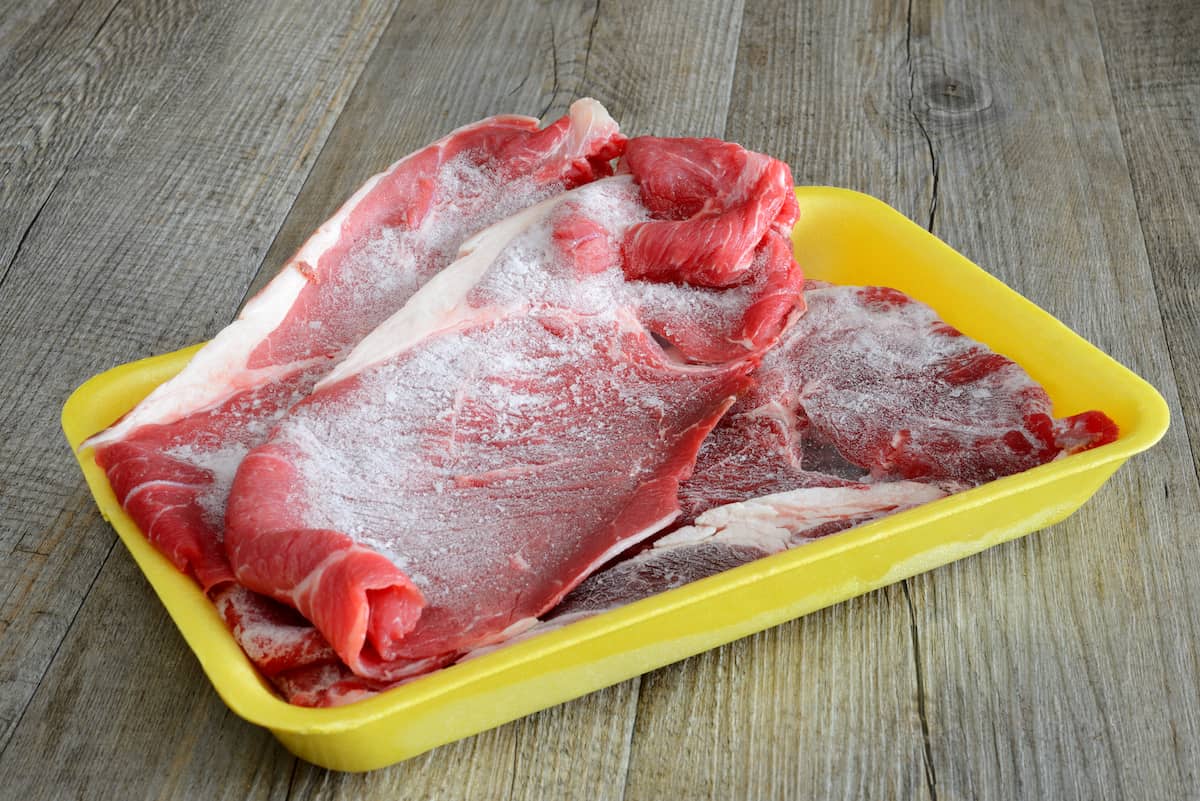
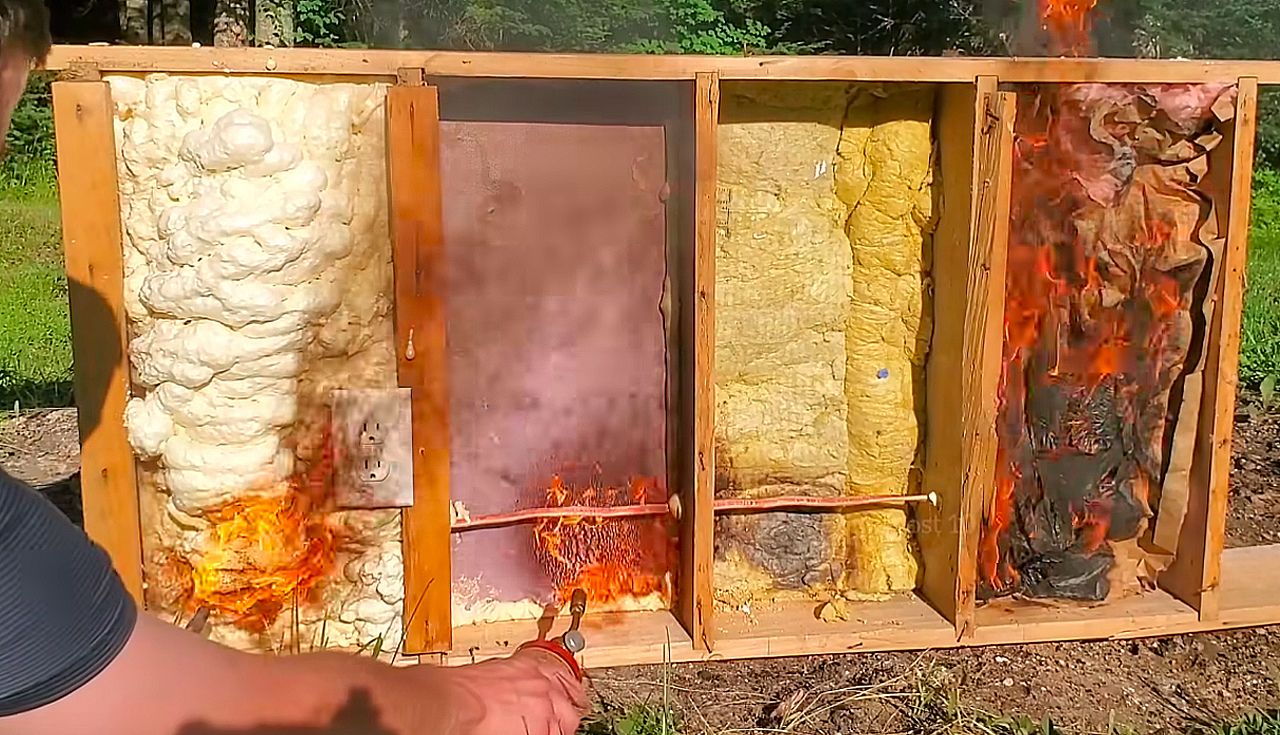
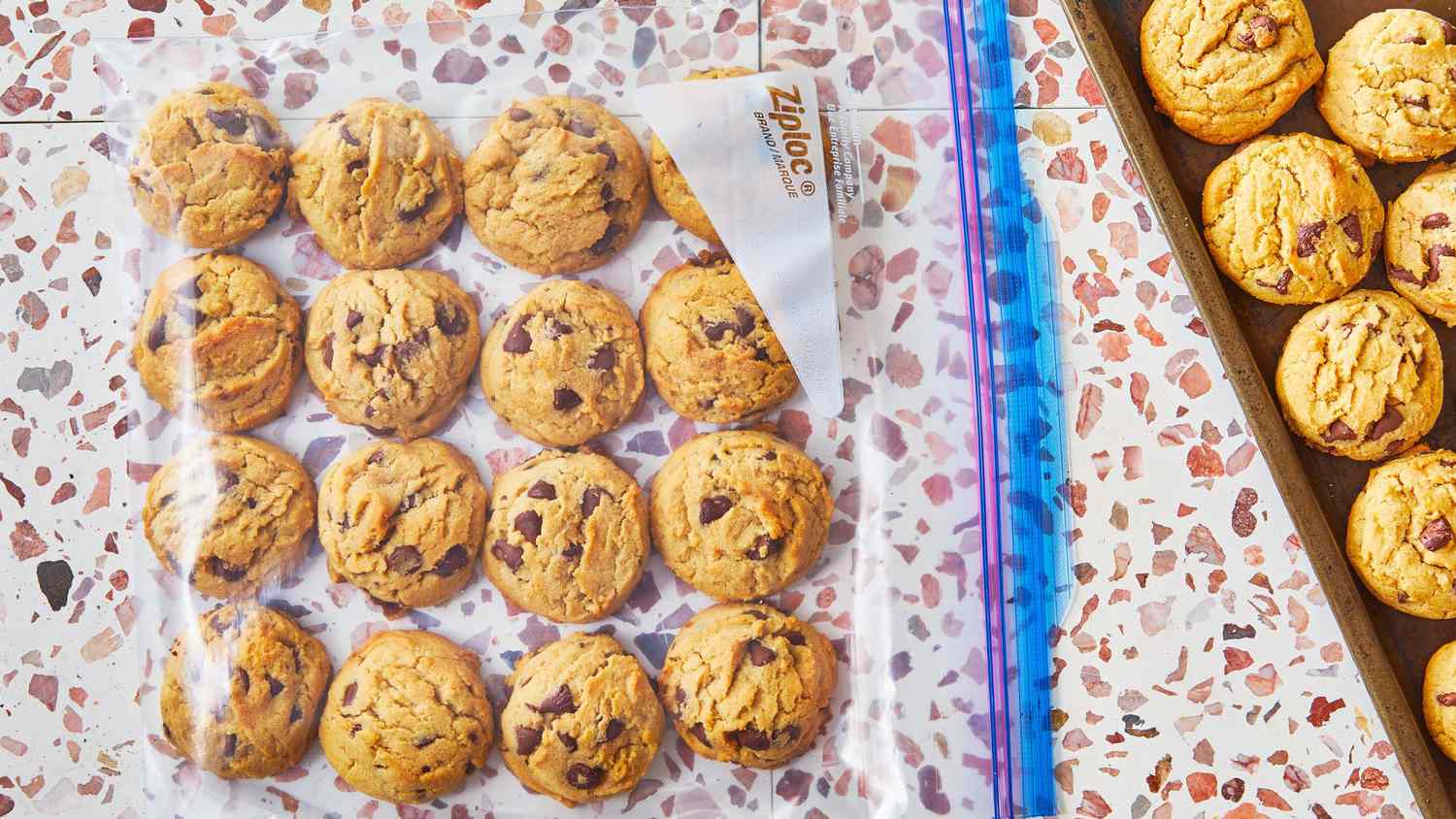
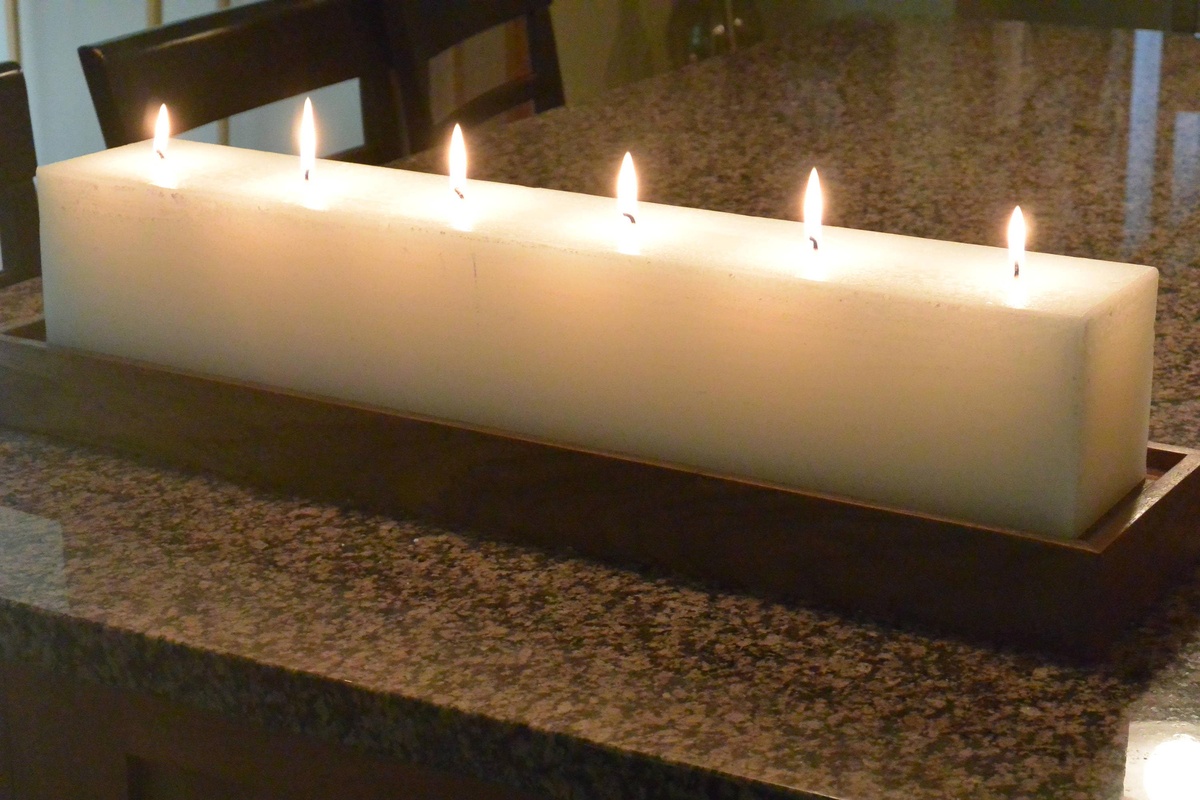
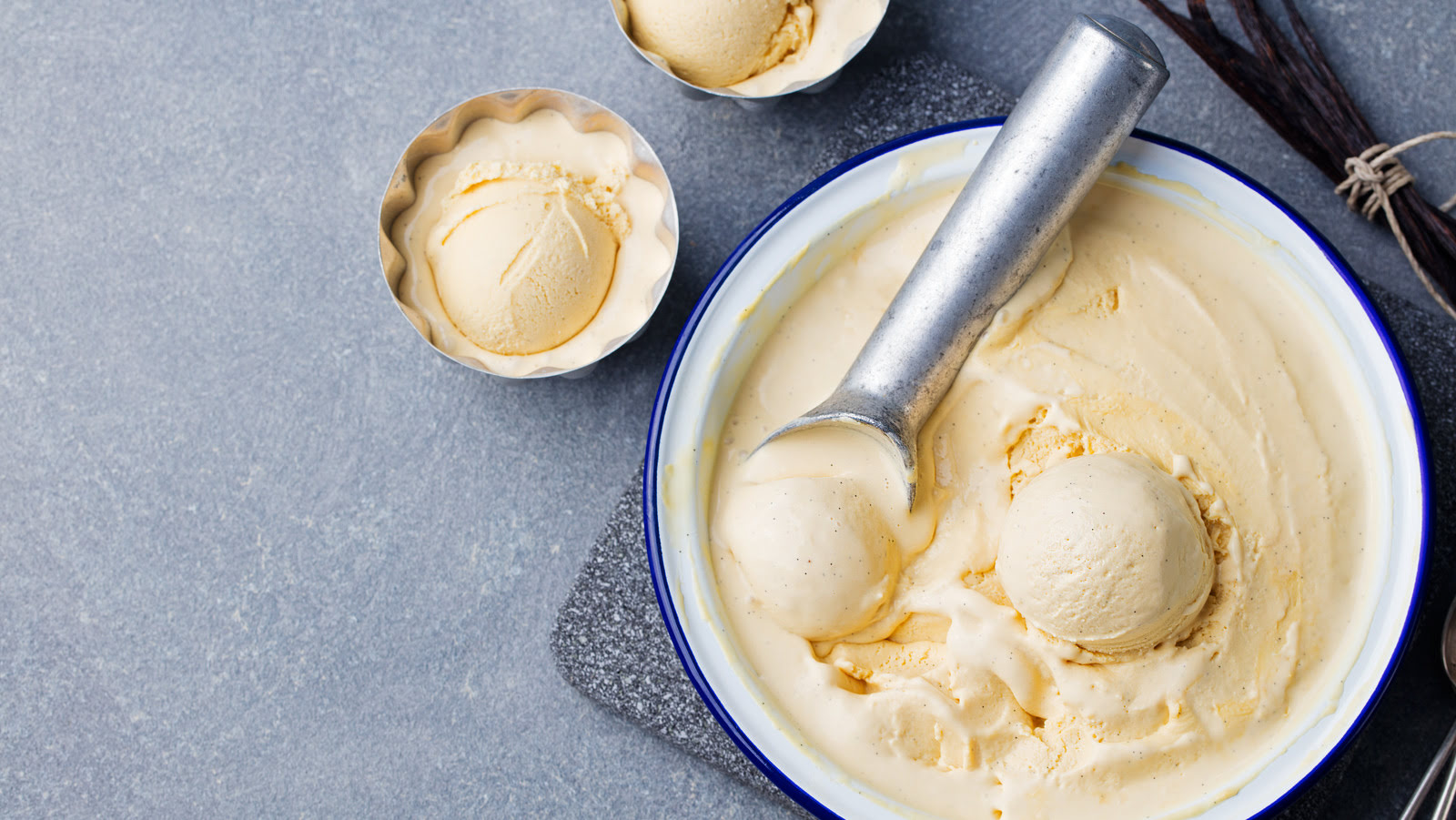

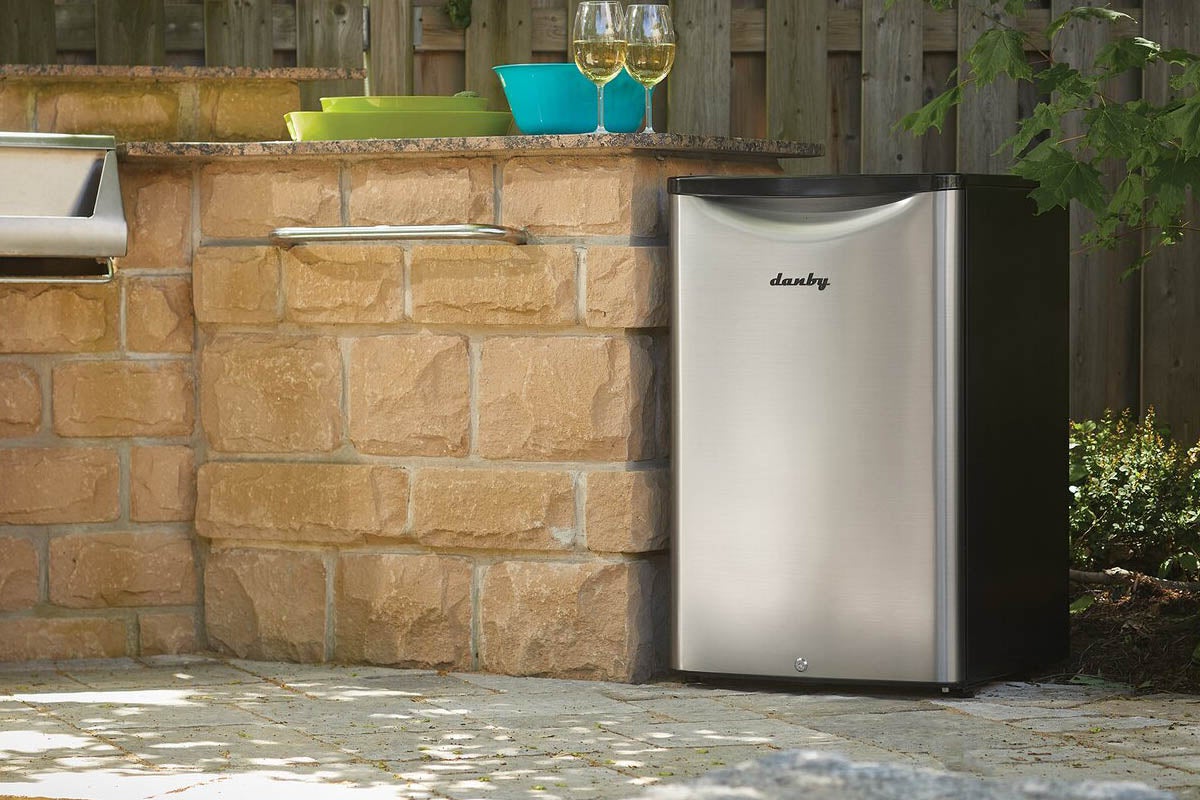


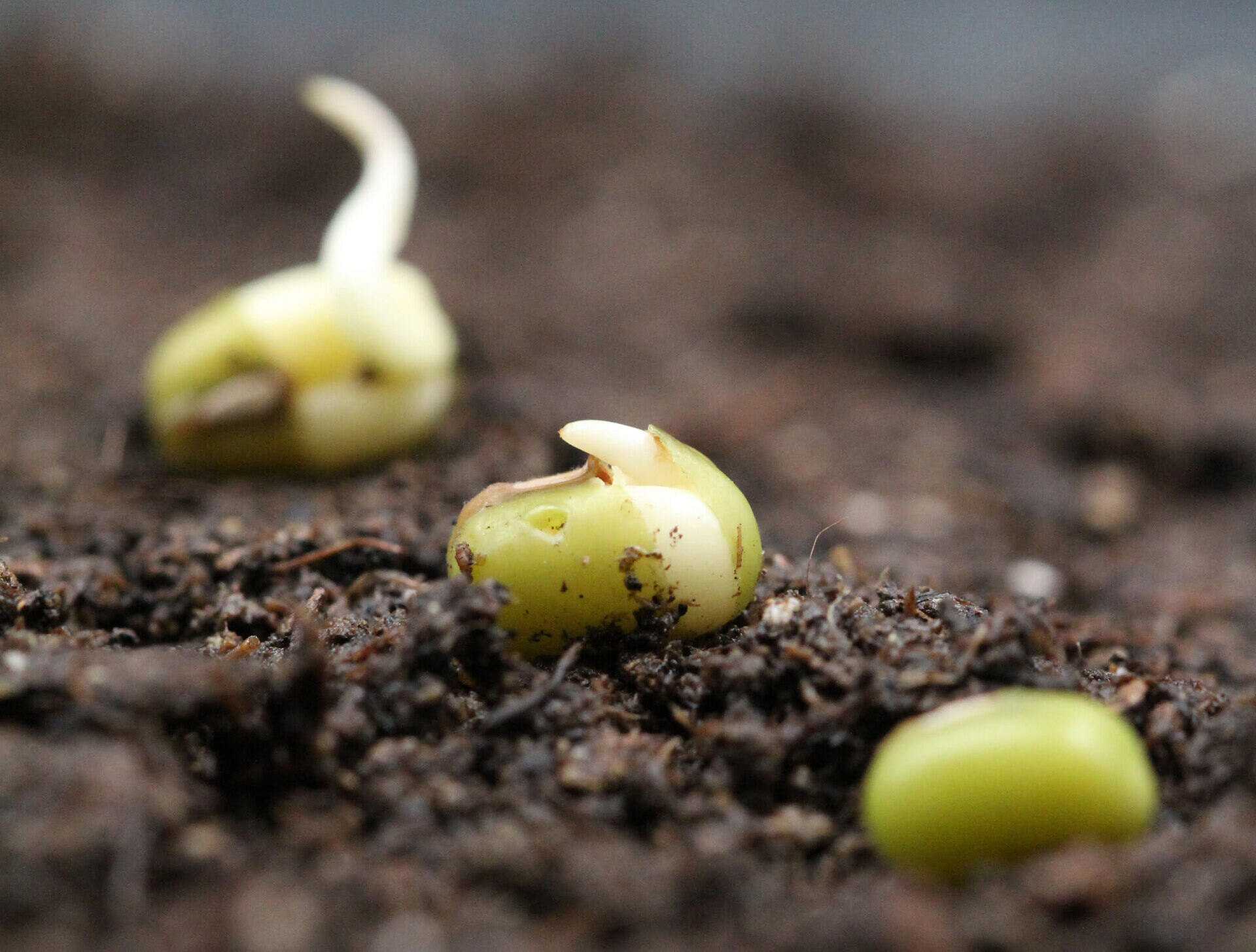

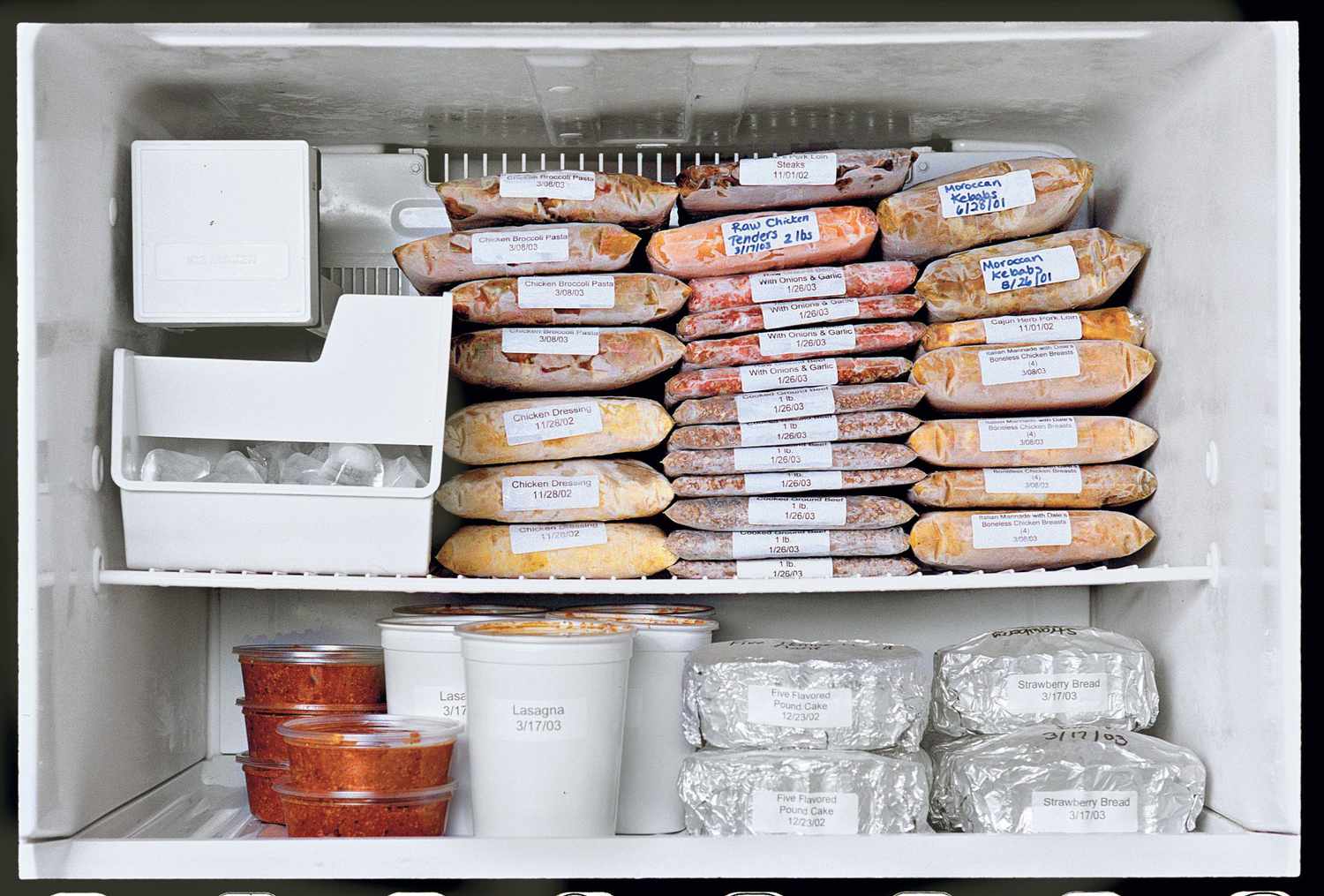

0 thoughts on “What Does Freezer Burn Do”